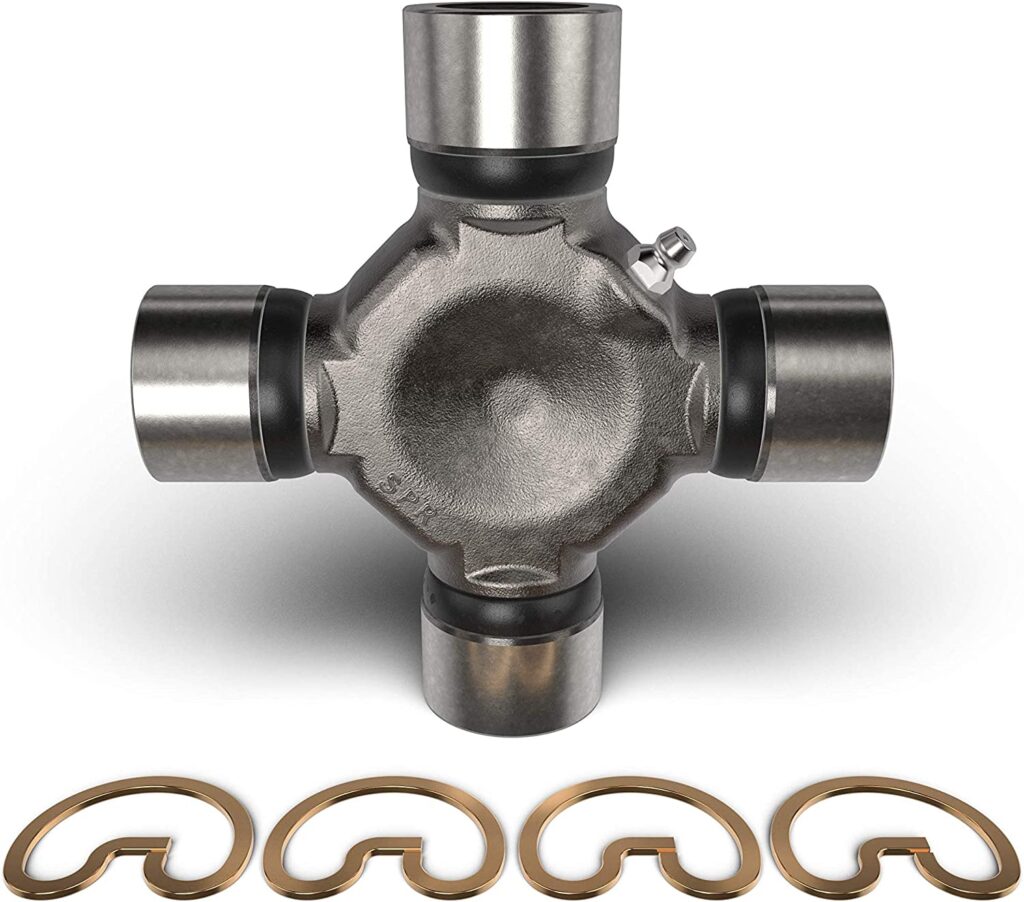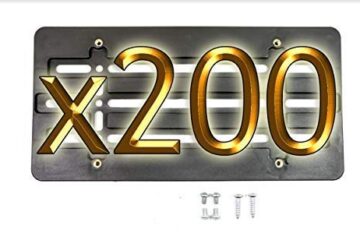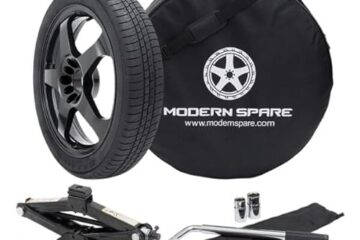Unlocking the Pros and Cons: 1480 Vs 1550 U Joint
The 1480 and 1550 u joint differ in their size and torque handling capabilities. The 1480 is smaller and can handle less torque compared to the larger 1550 u joint.
U joints are an essential part of a vehicle’s driveshaft, which transfer power from a transmission or differential to the wheels. The 1480 and 1550 u joint are two types of u joints available in the market. The primary difference between them is the size and torque capacity.
| Feature | U-Joint Kit 1480 Series | U-Joint Kit 1550 Series |
|---|---|---|
| Series Classification | 1480 | 1550 |
| Application | Medium to heavy-duty trucks, agricultural equipment, | Heavy-duty trucks, commercial vehicles, |
| industrial machinery | buses, heavy-duty equipment | |
| Bearing Cap Diameter | Bearing Cap-to-Cap Distance | Varies based on a specific model |
| Varies based on a specific model | Varies based on a specific model | Varies based on specific model |
| Load-Bearing Capacity | Designed for heavy-duty applications | Designed for heavy-duty applications |
| Material | High-quality steel | High-quality steel |
| Heat Treatment | Maximum strength | Maximum strength |
| Compatibility | Wide range of compatible applications | Wide range of compatible applications |
| Greaseable | Yes | Yes |
| Snap Ring Style | Outside Snap Ring Style (OSR) | Outside Snap Ring Style (OSR) |
| Application-Specific Variants | Available for specific applications (e.g., agriculture) | Available for specific applications (e.g., commercial) |
| Recommended for | Medium-duty and heavy-duty trucks | Heavy-duty trucks, commercial vehicles |
| Agriculture and industrial machinery | Buses, heavy-duty equipment |
The 1480 u joint is small and has a lower torque capacity compared to the 1550 u joint, which is larger and can handle more torque. The choice of u joint depends on the vehicle’s power output, weight, and intended use. Selecting the right u joint is crucial to ensure optimal performance and safety of the vehicle.
| U-Joint Kit 1480 Series | U-Joint Kit 1550 Series | |
|---|---|---|
| Pros | – Designed for heavy-duty applications | – Designed for heavy-duty applications |
| – Wide range of compatible applications | – Wide range of compatible applications | |
| – Greaseable design for easy maintenance | – Heat-treated for maximum strength | |
| – Outside Snap Ring Style (OSR) for secure assembly | – Available application-specific variants (e.g., commercial vehicles) | |
| – Suitable for medium to heavy-duty trucks and equipment | – Suitable for heavy-duty trucks, commercial vehicles, and equipment | |
| Cons | – May have limited compatibility with lighter vehicles | – Limited range of specific models and variants |
| – Higher load-bearing capacity may not be necessary for all applications | – Availability of application-specific variants may vary |
What Are U Joints And Their Functionality?
U joints, also known as universal joints, are an important component of a vehicle’s drivetrain. These mechanical connections are located in the driveshaft and allow for torque to be transmitted between two intersecting shafts. They are used in various applications, including cars, trucks, and heavy machinery.
The purpose of a u joint is to provide flexibility while transmitting power. Without them, the driveshaft would vibrate and cause damage to other components. U joints may vary in size and design, such as the 1480 or 1550 u joint commonly used in heavy-duty trucks.
Proper maintenance and lubrication of u joints are crucial to ensure their longevity and prevent costly repairs.
Importance Of U Joints In Automotive Mechanics
U joints are integral components of automotive mechanics, ensuring power transfer between driveshaft and differential. The 1480 and 1550 u joints are two of the most commonly used types. These u joints differ in their size, strength, and torque capacity, which is crucial for handling heavy loads and high stress.
Choosing the right u joint can make a significant difference in the performance and longevity of vehicles. An ill-fitting u joint can cause vibration, noise, and even failure, leading to costly repairs and downtime. Thus, it is vital to follow oem recommendations and industry standards for u joint selection, installation, and maintenance.
Regular inspection and lubrication can also extend the life of u joints and prevent premature failures. Without u joints, cars and other vehicles would not be able to move, highlighting their significance in automotive mechanics.
Strength And Durability Of 1480 U Joints

1480 u joints are known for their superior strength and durability compared to their 1550 counterparts. These heavy-duty u joints are designed to withstand tough conditions and provide reliable performance. They are commonly used in heavy-duty trucks, off-road vehicles, and other equipment that require a robust drivetrain.
The 1480 u joint is larger than the 1550, allowing it to handle more torque and power transfer. It is also typically constructed with higher-quality materials, further contributing to its strength and longevity. Whether you are hauling heavy loads or navigating challenging terrain, the 1480 u joint is a dependable choice for your vehicle.
Strength And Durability Of 1550 U Joints

When it comes to the strength and durability of 1550 u joints, there are several factors to consider. These heavy-duty universal joints have a larger diameter and thicker cross compared to 1480 u joints, making them more ideal for applications that demand high torque and horsepower.
They also have more splines, which allows for greater flexibility and less wear. Moreover, 1550 u joints can handle more misalignment without breaking or failing, making them perfect for off-road vehicles or trucks that navigate rough terrain. The downside of 1550 u joints is the higher price point, but the benefits outweigh the cost in terms of longevity and performance.
If you want a reliable and robust universal joint, consider upgrading to a 1550 u joint.
Load Capacity And Working Conditions
1480 and 1550 u joint are two different sizes of universal joints. When it comes to choosing the best size for your application, consider the load capacity and working conditions. The higher the load capacity, the better the joint will perform under stress.
However, if the joint is working in harsh or extreme conditions, such as high heat or corrosive environments, a higher load capacity might not be enough. It is important to also consider the material and coating of the joint to ensure it will withstand the conditions it will be working under.
By following these guidelines and carefully considering all factors, you can select the right u joint for your needs.
Lubrication And Maintenance Requirements
Proper lubrication and maintenance is necessary to ensure the longevity and efficient performance of your 1480 or 1550 u joint. Regular application of high-quality lubricants will reduce friction and wear, preventing premature failure. It’s important to inspect the joint regularly to identify signs of damage or wear, such as rust, corrosion, cracks, or looseness.
Check the boot and seal for damage, as they protect the joint from contamination. Regularly clean the joint and surrounding components to avoid debris buildup, which can cause damage. Remember to always follow the manufacturer’s recommendations for maintenance and replacement intervals.
By carefully adhering to these guidelines, you can ensure optimal performance and minimize the risk of costly downtime.
Operating Temperature And Environment
Operating temperature and environment are major factors in the longevity of a 1480 or 1550 u joint. These u joints are commonly used in heavy-duty vehicles and equipment, and they experience high levels of stress and strain during operation. It is important to ensure that the u joint is operating within the temperature range specified by the manufacturer, as high temperatures can cause premature deterioration of the joint.
The environment in which the u joint operates is also important, as exposure to dust, dirt, and other debris can accelerate wear and tear. Regular inspection and maintenance can help to identify any issues with the u joint and prevent more serious problems from developing.
Taking these precautions can help to extend the life of the u joint and prevent costly repairs down the line.
Price Comparison Of 1480 And 1550 U Joints
U joints are essential components of the driveshaft assembly, used to transmit power at various angles. The 1480 and 1550 u joints are popular in heavy-duty applications, each with its own unique features. When it comes to a price comparison, several factors should be considered, including material quality, brand, and durability.
The 1480 u joint is generally less expensive, making it a budget-friendly option. However, the 1550 u joint provides higher torque capacity, making it suitable for heavy-duty tasks. Additionally, the 1550 u joint is often favored for its durability, which potentially offsets the higher cost.
Before making a decision, assess your specific requirements and consider both options carefully.
Availability Of 1480 And 1550 U Joints
1480 and 1550 u joints are essential components in heavy-duty vehicles and machinery. These u joints connect the drive train to the transmission and the differential, allowing for smooth power transfer. Availability of these u joints can vary depending on the make and model of the vehicle/machinery.
It is important to ensure that the right u joint is selected for the specific application. Some manufacturers only offer one size, while others provide both sizes depending on the model and application. Ultimately, it’s essential to check the specs and verify the availability of both 1480 and 1550 u joints before making a purchase, to ensure optimal performance and durability.
Matching U Joint Specifications With Vehicle Requirements
Matching u joint specifications with vehicle requirements is essential for safe and efficient driving. When choosing between 1480 vs 1550 u joints, it is important to consider factors such as vehicle weight, horsepower and torque. These factors will affect the load capacity and strength required from the u joint.
Additionally, the type of driving – whether it’s off-roading or highway commuting – should be taken into consideration as well. By matching the right u joint specifications with your vehicle requirements, you can ensure smooth and reliable operation of your driveshaft.
It is recommended to consult with a professional mechanic or manufacturer to determine the appropriate u joint for your vehicle. Following these guidelines will help you make an informed decision and ensure the safety of you and your passengers on the road.
Replacing U Joints
Replacing u joints can be a daunting task for most car owners. If your vehicle’s u joints have worn out, you have two options to choose from – 1480 u joints or 1550 u joints. Here are some guidelines to help you: firstly, make sure your vehicle is parked on a flat surface and the emergency brake is engaged.
Secondly, disconnect the driveshaft and mark the yokes to ensure correct reassembly. Thirdly, remove the old u joints by pressing them out with a u joint press. Fourthly, install the new u joints by pressing them in using the u joint press.
Fifthly, torque all the bolts and nuts to the manufacturer’s specifications. Finally, reconnect the driveshaft and test drive the vehicle. Following these steps will ensure that your vehicle runs smoothly and efficiently.
Frequently Asked Questions For 1480 Vs 1550 U Joint
What Is A U Joint?
A u-joint is a flexible component that connects two rotating shafts in a vehicle’s driveshaft.
What Is The Difference Between A 1480 And 1550 U Joint?
The 1480 u joint has a maximum angle of 32 degrees while the 1550 u joint has a maximum angle of 35 degrees.
How Do You Know If You Need To Replace Your U Joint?
You may need to replace your u joint if you hear clunking or squeaking sounds, feel vibrations, or see rust and wear.
Conclusion
The debate between the 1480 u joint and 1550 u joint is not a new one. However, it’s important to understand the difference between them and make an informed decision. While the 1480 u joint is commonly found on light-duty trucks and suvs, the 1550 u joint is built to be tougher and is often used on heavy-duty trucks and equipment.
If you’re upgrading your u joints, consider factors like vehicle weight, torque, and application before selecting one. Investing in the right u joint can save you time and money in the long run. It’s crucial to take into account the fact that opting for a cheaper option may cost you more because you’ll need to replace them more often.
Ultimately, it’s all about what suits your vehicle’s needs. Choose wisely and drive safely!





0 Comments